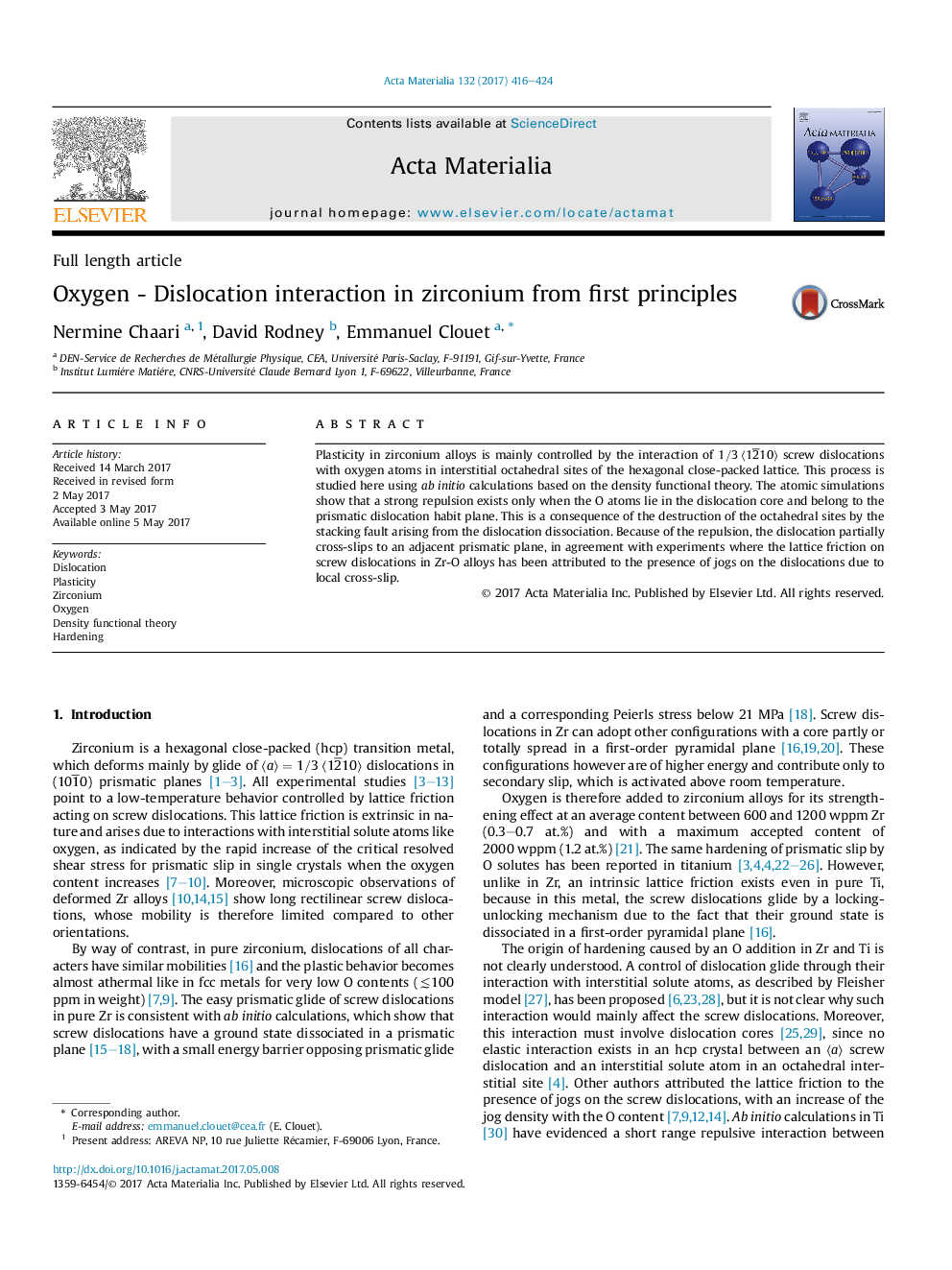| Article ID | Journal | Published Year | Pages | File Type |
|---|---|---|---|---|
| 5436176 | Acta Materialia | 2017 | 9 Pages |
Plasticity in zirconium alloys is mainly controlled by the interaction of 1/3ã12¯10ã screw dislocations with oxygen atoms in interstitial octahedral sites of the hexagonal close-packed lattice. This process is studied here using ab initio calculations based on the density functional theory. The atomic simulations show that a strong repulsion exists only when the O atoms lie in the dislocation core and belong to the prismatic dislocation habit plane. This is a consequence of the destruction of the octahedral sites by the stacking fault arising from the dislocation dissociation. Because of the repulsion, the dislocation partially cross-slips to an adjacent prismatic plane, in agreement with experiments where the lattice friction on screw dislocations in Zr-O alloys has been attributed to the presence of jogs on the dislocations due to local cross-slip.
Graphical abstractDownload high-res image (422KB)Download full-size image
